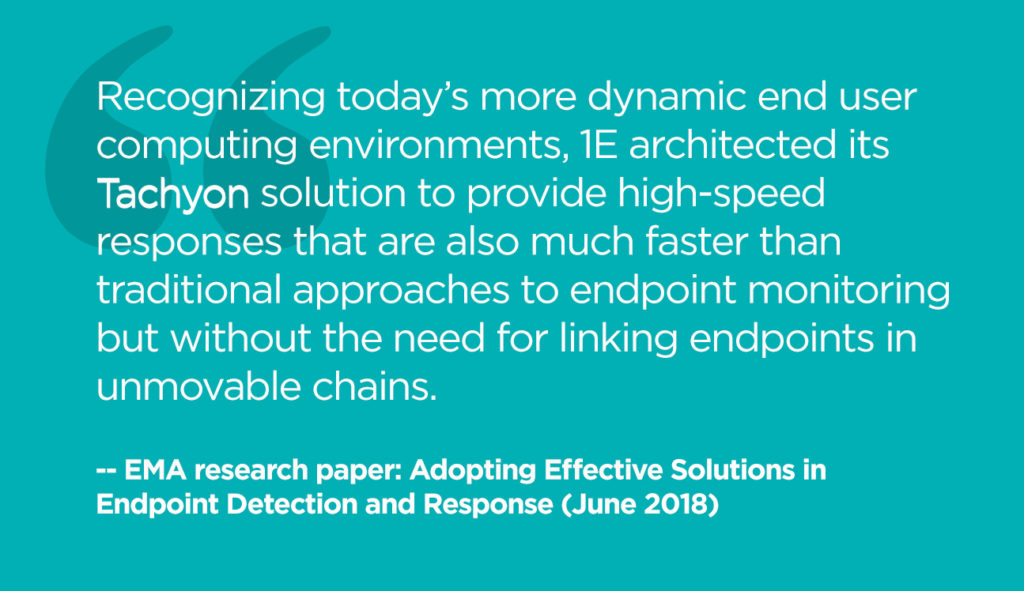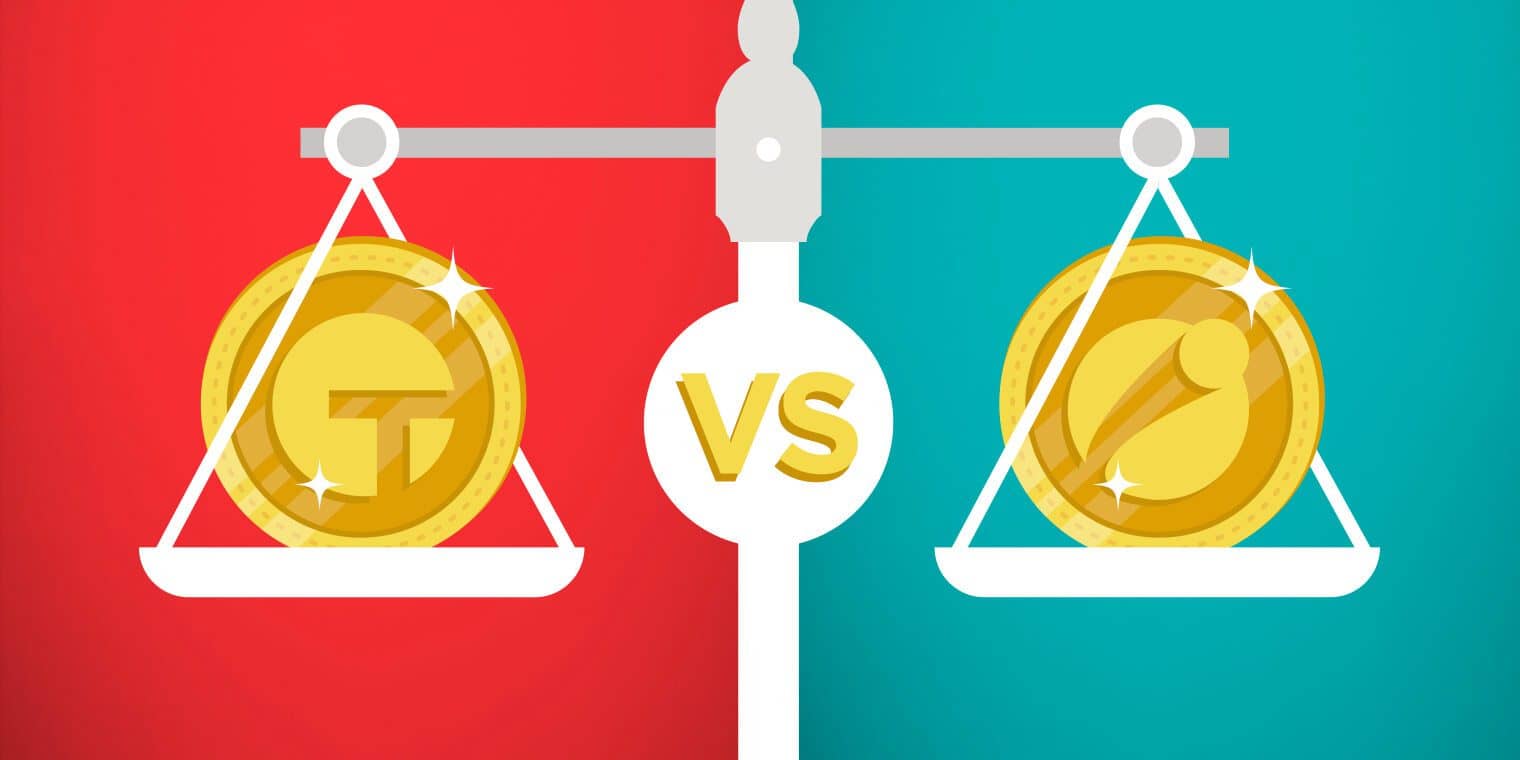The difference a future-proof architecture makes
Enterprise Management Associates (EMA) conducted an objective and independent evaluation of two of the leading endpoint detection and response (EDR) platforms currently available: Tanium and 1E Tachyon. BecauseTanium planted their flag first in the EDR space, they have been regarded as being the “best” solution mostly because of their longevity in the industry. Indeed, Tanium has been promoting their platform long before most competing solutions were introduced. Tanium’s success can be linked directly to its peer-to-peer (P2P) approach to endpoint communication. However, Tanium’s development predates the introduction of the iPhone and the subsequent mobile revolution. Unlike Tachyon’s modern architecture, Tanium’s architecture is only ideally suited for static environments supporting non-moving PCs on dedicated LANs. While many organizations with large static PC deployments may find Tanium suitable, we believe the world has moved on— and such environments are rapidly diminishing.
Tachyon’s underlying architecture offers a lower friction approach, paving the way to significantly faster performance than what can be attained by negotiating through a Tanium P2P chain. Not only does this mean that enterprise devices can still be supported regardless of their location, it also enables the extension of support to more portable endpoints such as laptops, tablets, smartphones, and IoT devices that would otherwise have to be managed separately. Rather than simplifying security and management processes, utilizing multiple endpoint detection and response tools can actually increase administrative complexities and related costs.

Tachyon was also designed to provide greater extensibility than Tanium. This is particularly evident in the platform’s orchestration capabilities that enables process automation of resources beyond just basic shell scripts. Additionally, Tachyon’s REST API and broader points of integration provide easier and more reliable connections to third-party management solutions.
Tachyon’s Design Strengths:
- Modern Architecture: Tanium’s architecture predates the mobile revolution.
- Support for mobile working: Tanium’s architecture is only ideally suited for static environments supporting non-moving PCs on dedicated LANs.
- Faster Response Speed: Tachyon offers a lower friction approach with faster performance than what is possible with Tanium’s peer-to-peer chain.
- Lower resource impact on endpoint: Tanium’s approach sequentially executes scripts locally on each endpoint, adding to network and CPU load.
- Extensibility beyond scripting: Tachyon’s process automation goes beyond Tanium’s support for just basic shell scripts (using SCALE).
- Broader Integration: Tachyon’s REST API provides easier, more reliable connections to third-party management solutions.
While both Tanium and Tachyon can be extended to multiple use cases, Tachyon is significantly faster thanks to innovative modern architecture. Tachyon also works well with endpoints on home-WiFi, hotels, etc. that are not connected to the corporate LAN or VPN and is easier to interoperate with, thanks to the RESTful API approach. As such, it is our opinion that Tachyon is the better EDR tool choice in the areas that really matter to modern business (scalability, performance, cost). If you’re looking for a future-proof EDR solution, look no further.
Read the full report by EMA Research Director for Endpoint Management Steve Brasen here.




